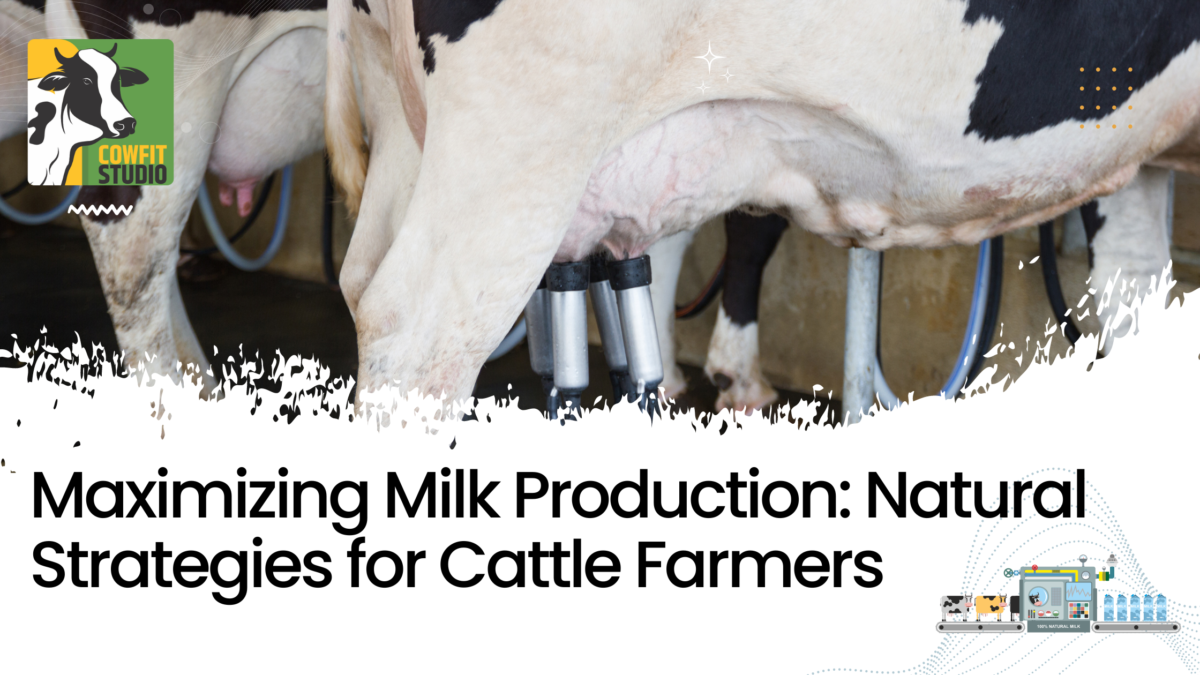Introduction:
For cattle farmers, ensuring optimal milk production is essential for the success of their operations. While genetics and management practices play significant roles, there are natural strategies farmers can employ to enhance milk production in their herds. In this blog post, we’ll explore five effective tips for increasing milk production naturally in cattle, empowering farmers to maximize their herd’s productivity while promoting animal welfare and health.
- Quality Nutrition Matters: Just like humans, cattle require a balanced diet to maintain optimal health and support milk production. Providing high-quality forage, such as fresh grass or alfalfa, along with supplemental feed rich in protein and energy, is crucial for meeting the nutritional needs of lactating cows. Ensure access to clean, fresh water at all times, as dehydration can significantly impact milk production. Consult with a nutritionist to formulate a diet tailored to your herd’s specific requirements and adjust feeding strategies as needed throughout the lactation cycle.
- Stress Reduction and Comfort: Stress can have a profound impact on milk production in cattle. Minimize stressors in the environment by providing comfortable housing, adequate ventilation, and clean bedding for your herd. Implement regular handling and management practices that are calm and gentle to reduce stress levels. Additionally, ensure that cows have access to sufficient space for movement and social interaction, promoting their overall well-being and reducing stress-induced disruptions to milk production.
- Optimize Milking Practices: Efficient milking practices are essential for maximizing milk production and maintaining udder health. Establish a consistent milking routine that minimizes disruptions and ensures thorough udder emptying. Properly trained personnel should handle milking equipment with care, ensuring cleanliness and sanitation to prevent mastitis and other udder infections. Regularly monitor udder health and address any signs of inflammation or abnormalities promptly to maintain optimal milk production.
- Promote Natural Grazing and Exercise: Allowing cattle access to pasture for natural grazing and exercise can have positive effects on milk production. Grazing on fresh pasture provides cows with access to diverse nutrients and encourages natural behaviors, contributing to overall herd health and productivity. Rotate pastures regularly to prevent overgrazing and ensure access to high-quality forage throughout the grazing season. Additionally, encourage exercise and movement within the herd, as physical activity stimulates metabolism and can enhance milk production in lactating cows.
Conclusion:
By implementing these natural strategies, cattle farmers can effectively increase milk production in their herds while promoting Cattle welfare and sustainability. Quality nutrition, stress reduction, optimal milking practices, access to pasture, and support for natural breeding cycles are essential components of a holistic approach to maximizing milk production naturally. By prioritizing the health and well-being of their cattle and embracing sustainable farming practices, farmers can achieve greater productivity and profitability while contributing to the long-term success of their operations and the dairy industry as a whole.


